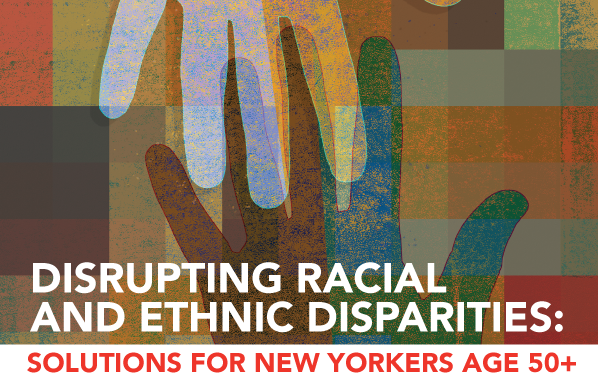AARP Hearing Center

Debra Robles, 62, has called Spanish Harlem home for most of her life. Her grandmother arrived from Puerto Rico in 1920. And her mother played the marimba in an all-women’s band that performed in the community.
But gentrification is threatening the affordability and cultural fabric of her beloved neighborhood. That’s led Robles to become a community advocate, helping tenants in her rent-stabilized apartment building deal with aggressive landlord tactics.
“I like the community. I really don’t want to leave,” Robles said. “A lot is going on here with rezoning.” She said they’ve lost a baseball field and community gardens and her salsa meetup group has been relocated.
This month, AARP New York is rolling out its second round of “Disrupting Disparities” reports, which focus on issues that people of color face as they age, such as gentrification, lack of affordable housing, drug costs, caregiving demands and financial security. A team of experts identified the challenges 50-plus New Yorkers of color throughout the state contend with as they age.
A previous report, last year, led to a number of policy initiatives. “We realized nobody was looking at the 50-plus through the lens of communities of color and how they were disparately affected by policy,” said Beth Finkel, AARP New York state director.
Proposed solutions include a caregiving tax credit, a comprehensive approach to prescription drug costs, and rent stabilization for the entire state—achieved as part of permanent rent-law reforms enacted in June.
The poverty denominator
One of the common threads in the disparity research was poverty, Finkel said. “If your income is lower, you’re unable to save for retirement.” Poverty rates for older minority populations in the state are significantly above the 14 percent average for all older New Yorkers. The latest research shows that among those 65 and older, 26 percent of the state’s U.S.-born Hispanics, 22 percent of Asian Americans, 19 percent of African Americans and 20 percent of immigrants live in poverty. “Without money, it’s harder to get housing, your housing could be farther from public transportation, and it’s difficult to afford prescription drugs,” said Kristen McManus, associate state director for AARP New York. “Everything’s connected.”
Some findings from the “Disrupting Disparities 2.0” research:
▶Those in communities of color tend to start caregiving at a younger age because there are more health-related challenges. Caregivers may miss out on promotions and sometimes are forced to leave jobs.
▶Nationwide, people of color experience the impact of prescription costs more heavily, with 23.6 percent of Hispanic and 20.4 percent of African American diabetics not filling prescriptions because of cost, compared with 14.4 percent of white diabetics.
▶Twenty-four percent of all U.S. households and 34 percent of those with someone over age 65 are “energy burdened,” spending more than 6 percent of their income on utilities. But 47 percent of older African American and 40 percent of older Hispanic households are energy burdened.
To learn more, visit aarp.org/nydisruptdisparities.
Donna Liquori is a writer living in Albany.
For More News:
New York Looks at Disrupting Disparities
Michigan Takes Steps to Address Health Disparities































































